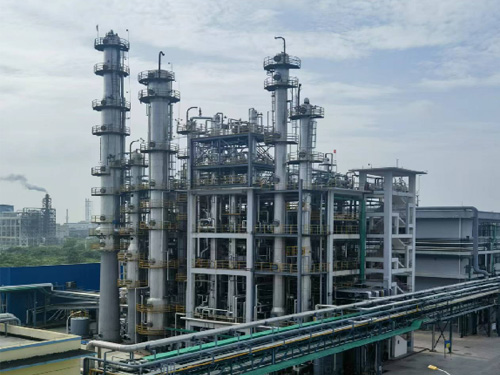
Solvent dewaxing and deoiling is a widely used process in the petrochemical industry, aimed at improving the purity and quality of petroleum-based products. With the continuous growth of industrial demand and advancements in technology, the importance of solvent dewaxing and deoiling in the production of lubricating oils, white oils, paraffins, and other products has become increasingly prominent. This article provides a comprehensive analysis of the solvent dewaxing and deoiling process and its extensive applications.

I. What is Solvent Dewaxing and Deoiling?
Solvent dewaxing and deoiling is a process that utilizes the different solubility properties of oil and wax at low temperatures to separate wax from oil. Common solvents used include methyl ethyl ketone (MEK), methyl isobutyl ketone (MIBK), and toluene. This process involves cooling the mixed solution to precipitate wax crystals, which are then separated by filtration. The solvent is subsequently recovered, resulting in high-purity petroleum products.
II. Solvent Dewaxing and Deoiling Process Steps
1. Pretreatment: The raw material is heated to an appropriate temperature to achieve a dissolved state, facilitating mixing with the solvent.
2. Solvent Mixing: The preheated raw material is mixed with the solvent to form a homogeneous solution.
3. Cooling and Crystallization: The mixed solution is gradually cooled to precipitate wax crystals. The cooling rate and temperature control are crucial to ensure uniform wax crystal formation.
4. Filtration and Separation: Filtration equipment is used to separate solid wax crystals from the liquid mixture.
5. Solvent Recovery: Solvent is recovered through distillation or other methods to reduce production costs and environmental pollution.
6. Product Processing: The separated oil undergoes further refining to remove residual solvents and impurities, resulting in high-quality finished oil.
III. Advantages of Solvent Dewaxing and Deoiling
●Efficient Separation: Effectively separates wax and oil, enhancing product purity and quality.
●High Controllability: The wax precipitation process can be precisely controlled by adjusting the cooling rate and solvent amount.
●Environmental and Cost Savings: Solvent can be recycled, lowering production costs and environmental impact.
IV. Applications of Solvent Dewaxing and Deoiling
1. Lubricating Oil Production: Removing wax improves the low-temperature performance and viscosity index of lubricating oils, ensuring good lubrication even under extreme temperatures.
2. White Oil Production: Produces high-purity white oil for the cosmetics and pharmaceutical industries, ensuring product safety and stability.
3. Paraffin Production: Produces high-quality paraffin used in candles, paper coatings, and other products.
4. Microcrystalline Wax Production: Used in the production of specialized wax products for the food, rubber, and cosmetics industries.
V. Future Development of Solvent Dewaxing and Deoiling
With increasing environmental awareness and technological advancements, the solvent dewaxing and deoiling process is continually being optimized for greater efficiency and environmental friendliness. Future improvements in solvent recovery technology and process optimization will further enhance production efficiency and product quality, meeting the market demand for high-purity petroleum products.
VI. Conclusion
As a crucial petrochemical process, solvent dewaxing and deoiling offers efficiency, environmental benefits, and controllability, playing a significant role in the production of lubricating oils, white oils, paraffins, and other products. With ongoing technological progress and rising market demands, this process is poised for even broader development prospects. Understanding and mastering this process is vital for related enterprises to improve product quality and reduce production costs.
By comprehensively analyzing the solvent dewaxing and deoiling process and its applications, we can better understand its significance in modern industry, thereby effectively utilizing this technology in actual production to enhance corporate competitiveness.
If you need more information, please feel free to contact us!



